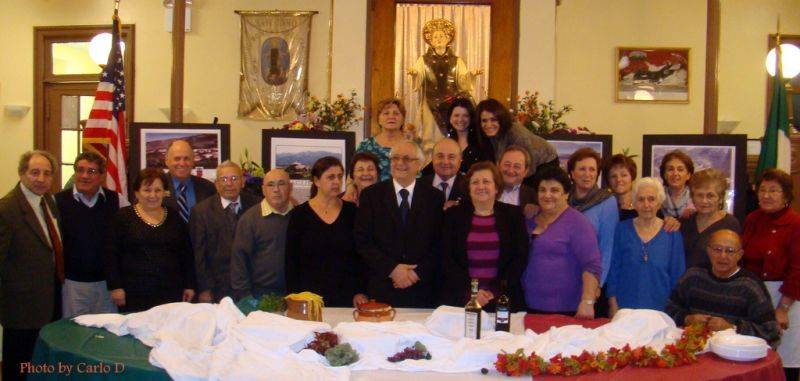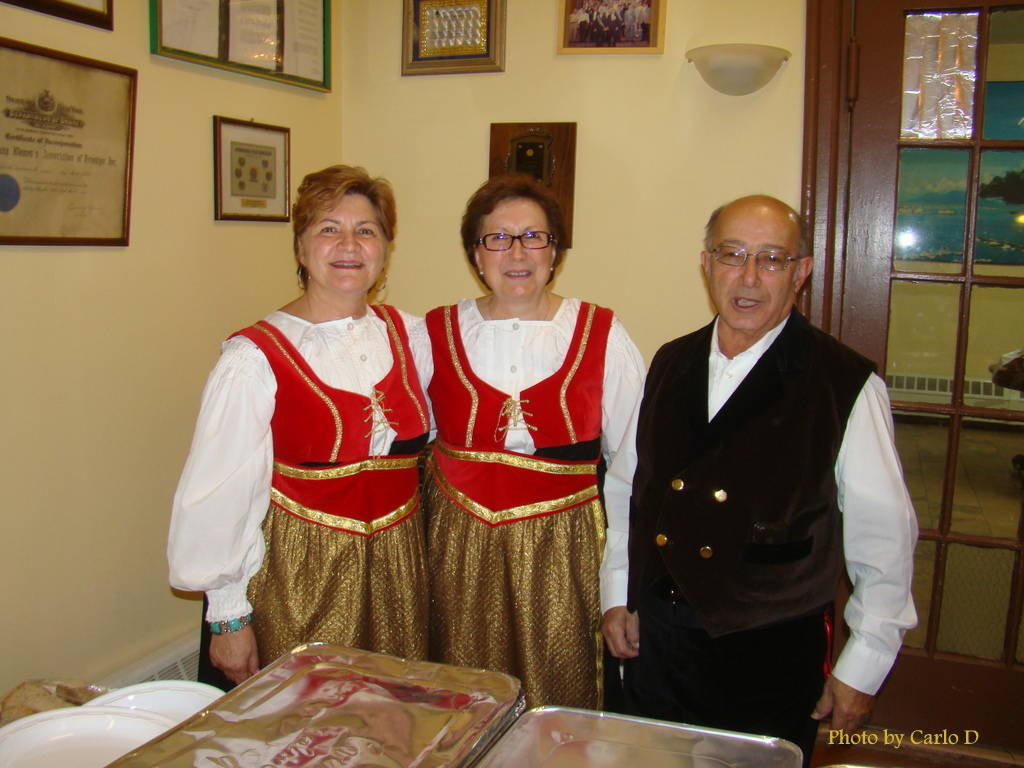Revisiting Nonna's Kitchen
As generations pass, traditions in the Italian home could sometimes get lost. Not many in the young generation take a moment to learn and practice certain traditions that were either done by their grandparents or parents. For the few who take interest with curiosity and passion, traditions are not only picked up but also passed on. On this occasion, the region of Campania, Italy, organized an event titled "La Cucina della Nonna", where local social clubs of the region came together and re-introduced typical dishes from their city of origin, made the way that their grandmother did. In Italy, food dishes not only change by region by also by one neighboring town to another. One plate of homemade pasta is made in one way while another technique is done just a few miles away. It's a fascinating realization where in which Italian neighbors could still teach each other today.
Held on November 24th at the San Cono Association of Teggiano in Williamsburg, Brooklyn, guests were treated to a variety of traditional dishes coming from cities in the provinces of Salerno and Avellino. Associations from the cities of Quaglietta, Sassano, Caggiano, and Sacco were on display to present their dishes, all who respectively have an actively large community of theirs present in New York. Each association had a participant demonstrating how certain homemade pastas were made. For example, the Teggiano style of Cavatelli, Fusilli by the Association of Sacco in America, ravioli made with a zenzifero herb by the Società Gioventù Quagliettana. Over 15 pounds of homemade pasta was prepared for the event. "This is just the first event of many more", says project director, Annalisa Masullo. She adds, "It's amazing how the ladies easily demonstrate how to make fusilli, cavatelli, and sausages. It reminded of my grandma when she used to cook for me during the summer time. It's amazing how Italians still keep their tradition in cooking like they did 50 or 30 years ago. And all together with the music, it was like being in Italy back in time ."
As these towns originate from mountainous parts of the Campania region, their cuisine is characterized as La Cucina Povera, meaning "peasant cooking". Traditionally, peasants would cook the things that they had on the land which they worked on. Whether it be vegetables, legumes, or livestock which they've raised, they made do with simple foods to create full meals. Even when it comes to cow or sheep milk to make either ricotta and typical cheeses like "caciocavallo" and "scamorza". Following the pasta, the second course served tasty examples of "la cucina povera" from "nonna". Keeping with the theme of tradition, the foods were labeled in its dialect:
Savuzicchia cu' pipajuoli - Sausage roasted with peppers
Cunigliu mbuttanatu - Rabbit with stuffed herbs
Coria - Rolled and stuffed pork skin
Trippa cu' patanj - Tripe with potatoes
From food demonstrations to food tastings, guests were entertained throughout the evening by an accordion player, dancing "la tarantella" in traditional folk clothing. Cheeses and roasted chestnuts were later passed around for more savory tastings. It was an evening for sharing food and laughter which was then impeccably concluded with homemade desserts. Zeppole, which are typically styled as a knot for this community rather than the usual large piece of fried dough seen from street festivals. Chiacchere is a long strip of dough either rung around into a circle or cut into strips, fried, and drizzled with honey or covered in powdered sugar. And finally, struffoli, the most well recognized dessert found in Italian bakeries. Struffoli are small balls of fried dough mixed together with honey and touched with sprinkles.
Nothing more than appreciating food that was made from the heart of a grandmother. Here's to hoping traditions like these are continued for all Italian regions, keeping Italy's rich food culture alive and not lost.




































i-Italy
Facebook
Google+
This work may not be reproduced, in whole or in part, without prior written permission.
Questo lavoro non può essere riprodotto, in tutto o in parte, senza permesso scritto.